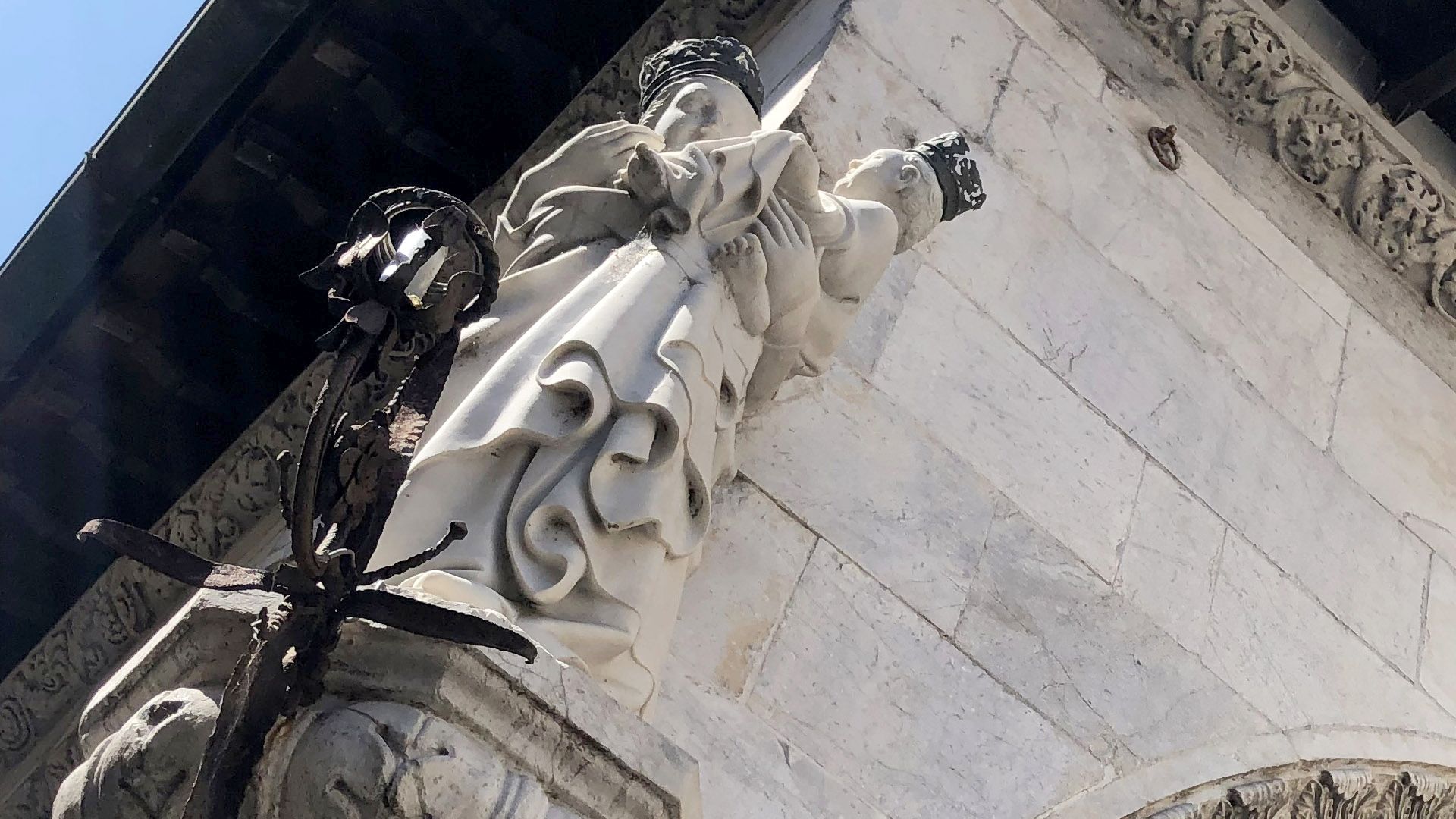Three churches dedicated to the Madonna, a chapel and a miraculous image
In the city of the hundred churches, a special itinerary is dedicated to the Madonna in the month of May. Three churches, a chapel and a miraculous image in a tour to discover the places dedicated to the Madonna in Lucca.
A beautiful portal decorated in bas-relief with a rose garden decoration rising from the mouth of dragons.
In 1309 the Accademia dei Mercanti financed the work of the small oratory of the Madonna della Rosa which also gave the street its name.
In 1333 the oratory was enlarged by using at one side the Roman walls of the II century BC, a rustic masonry ad opus quadratum, the only intact section and on site.

The entrance was moved to south, the previous facade included in the side of the new building and the decorations with branches of roses, extended to the Gothic-style four-light windows. A statue of Santa Maria della Rosa was placed on the rear corner of the building and another rose motif was used by Matteo Civitali in the 15th century for the festoon of the main portal.
Inside, three short, but airy aisles lead the gaze to the main altar where, in the 17th century, the miraculous image of the Madonna with a rose in her hands was placed. This image, according to tradition, healed the silence of a little shepherd who had found it after years of neglect.
The church of Santa Maria Bianca is known in Lucca by many names.
Santa Maria Forisportam, outside the gate of the Roman walls, once located right in front of the church on the place corresponding today to Via della Rosa and Via dell’Angelo Custode. Santa Maria Maggiore is another name to distinguish it from other churches dedicated to Mary, Santa Maria Bianca, as opposed to the church of Santa Maria Nera.

The square in front of it has a second name: Piazza della Colonna Mozza. The column, in front of the entrance to Via Santa Croce, corresponding to the east gate of the Roman walls, was the finish line the Palio race that was run in the Middle Ages.
The monochrome white facade of one of the oldest churches in Lucca is decorated with geometric lozenge arches and pilasters, as well as soft bas-reliefs and friezes of branches of foliage, dragons and lions in struggle. The interior is sober and bright, divided into three naves. There are Roman remains, and remarkable paintings made between the sixteenth and eighteenth centuries on the altars as well as a rich treasure of objects for worship. At the altar of the right transept, a precious octagonal ciborium, in gold leaf and semiprecious stones, and on the floor, in front of the altar, the line of a sundial activated by a small hole in the perimeter wall is traced.
The Santa Maria Nera church also has two names
Santa Maria Corteorlandini, name due to the family of the Longobards Rolandinghi whose palaces faced the square and the Santa Maria Nera church, houses a copy of the Black Madonna of Loreto kept inside a faithful copy of the room in which the Annunciation took place.

The church is a unique example of the typical architecture of Lucca. The sober exterior aspect is matched by a very rich interior part that plays with volumes and frescoes.
Completely restored in Baroque style of the 18th century, the church is in fact completely frescoed and has elegant forms that include three naves and a large choir as opposed to the main altar, which is accompanied by the equally precious furnishings which include about 30 frontals that alternate with the arrangement of the church altars. The most beautiful, with coral embroidery from the early 1600s, is exhibited on Christmas day together with the 17th century Nativity scene.
The most interested visitors can complete the visit of the church by visiting the monumental rooms of the State library, once a convent of Santa Maria.
The small chapel dedicated to Virgin Mary is an example of early twentieth century architecture
It is located inside the church of San Leonardo in the Borghi area. The architect Lunardi designed the delicate marble and metal embroideries, the furnishings, the paintings dedicated to the name of the Virgin that surround the chapel under a starry sky. The elegant figures in period clothes as rarely found in religious architecture are probably the only example in Tuscany.

The Madonna del Sasso is an icon linked to one of the most famous popular stories of Lucca.
A foolish soldier who was foolishly losing his little money by playing dice, lost even his last game and began to rail against the portrait of the Virgin, which blessed those who entered the city through the Borgo gate. He also threw a stone at her, and the Madonna of the painting moved the Child to the other side, to save it, and the soldier did not end well ...
The painting was moved to a safer place, in a chapel of the Sant`Agostino church where it still ia placed today.

